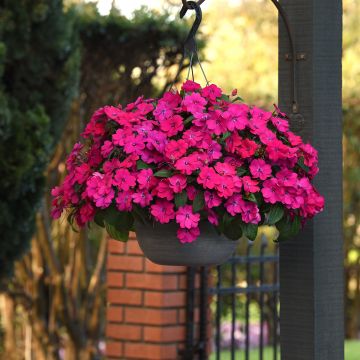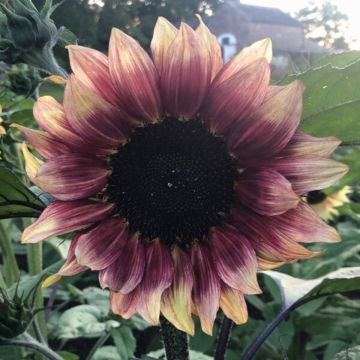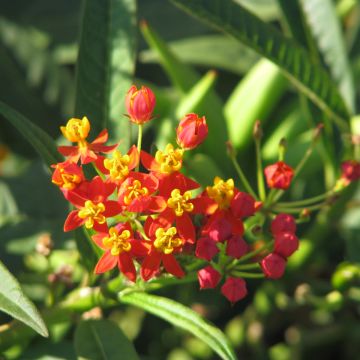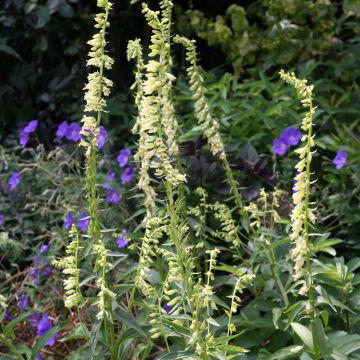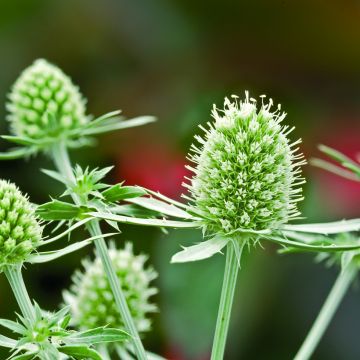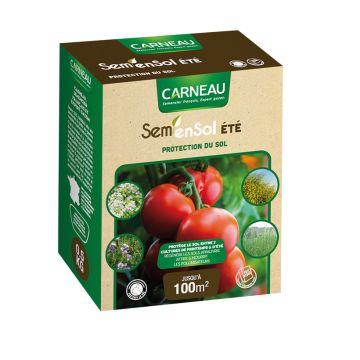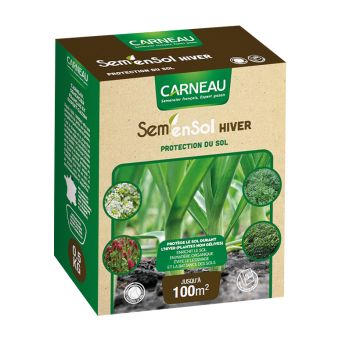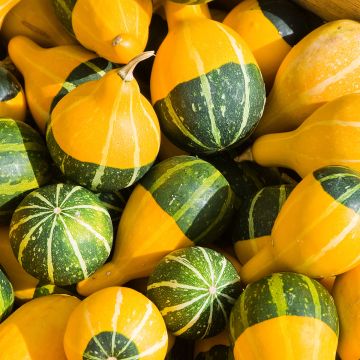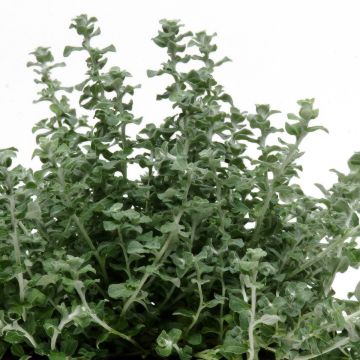

Primula japonica Millers Crimson Seeds - Japanese Primrose
Primula japonica Millers Crimson Seeds - Japanese Primrose
Primula japonica Miller's Crimson
Japanese Primrose, Candelabra Primrose, Bog garden Primula
Special offer!
Receive a €20 voucher for any order over €90 (excluding delivery costs, credit notes, and plastic-free options)!
1- Add your favorite plants to your cart.
2- Once you have reached €90, confirm your order (you can even choose the delivery date!).
3- As soon as your order is shipped, you will receive an email containing your voucher code, valid for 3 months (90 days).
Your voucher is unique and can only be used once, for any order with a minimum value of €20, excluding delivery costs.
Can be combined with other current offers, non-divisible and non-refundable.
Why not try an alternative variety in stock?
View all →This plant carries a 6 months recovery warranty
More information
We guarantee the quality of our plants for a full growing cycle, and will replace at our expense any plant that fails to recover under normal climatic and planting conditions.
Would this plant suit my garden?
Set up your Plantfit profile →
Description
Primula japonica 'Miller's Crimson' is a remarkably colourful variety of Japanese primrose that are usually sold in small pots. It is a variety that reseeds giving plants that faithfully reproduce the traits of their parents, making it possible to produce many of the same plants at a lower cost. This rather fascinating candelabra primrose has floral scapes whose tips are packed with whorls of deep purple pink flowers, adorned with a darker eye. Very hardy, this perennial plant will thrive in the sun in wet to moist soils, particularly along the edges of ponds, or in wet, shady undergrowth. It also is very attractive in window boxes, flowering profusely at the end of spring.
The Japanese primrose, also known as a candelabra primula, is a relatively unknown, but reliable and strong plant of the family Primulaceae, which deserves to be used more in gardens. It is a vigorous herbaceous perennial species native to the moist, wooded areas of Japan. The cultivar 'Miller's Crimson', from which it is derived, has been awarded in England by the Royal Horticultural Society for its ornamental qualities and garden performance. First, it produces 30-40 cm wide, leafy rosettes, from which slightly silvery, 40 cm tall floral stems emerge in late spring or summer. The light green, lanceolate, deciduous foliage features nicely crinkled, toothed leaves, measuring 10 to 30 cm long. Flowering takes place in May-June, in the form of large vertical scapes, whose tips bear several whorls or tiers of flowers. The flowers are a deep, bright crimson or reddish-purple with a darker centre. They measure 1 to 2 cm in diameter. The deciduous above-ground growth of this primrose dies back in winter to reappear in spring.
Candelabra Primrose 'Miller's Crimson' is useful for adding colour to shady, damp areas of the garden and thrives on riverbanks, in fertile soil that is reliably moist to wet. It can be combined with astilbes, hostas, knotweeds and rodgersias. Plant Japanese primroses in generous drifts for more impact. They are very hardy and long-lasting in evenly moist or wet soils. This variety also makes for beautiful borders, decorates shady rock gardens beautifully and performs well in pots and window-boxes.
Flowering
Foliage
Plant habit
Botanical data
Primula
japonica
Miller's Crimson
Primulaceae
Japanese Primrose, Candelabra Primrose, Bog garden Primula
Cultivar or hybrid
Other Flower seeds A to Z
View all →Planting and care
Sowing:
Japanese primrose seeds germinate at 15-20 °C. Higher temperatures can hinder germination. Sow in moist, well-drained special seed starting mix. Cover with a tiny pinch of vermiculite, taking care to not cover the seeds completely. Place in a mini-greenhouse or in a transparent plastic bag in a shaded position. Keep the soil moist but not soggy. Germination usually takes 10 to 30 days. Once the seedlings start to emerge, sprinkle a thin layer of sifted compost over the soil to help their roots develop better.
When seedlings are large enough to be handled, prick out into 8 cm pots. Grow them in a cooler environment, giving them plenty of water. Plant out, 23 cm apart.
Cultivation:
Since Candelabra primroses appreciate rather wet or even boggy soils, a location near a water source will suit them perfectly. Preferably place the plants in the shade, for example, in a cool spot in the undergrowth. Ideally, the soil should be deep, humus-rich, rather neutral to acidic, even peaty. In cooler climates, you can plant them in full sun, but only if the soil is kept moist all year round. It is also possible to grow these species in pots and planters, in a mixture of potting soil and peat that is kept wet all year round. Place the pot in the shade, in an east or north-facing position.
Remove wilted foliage and floral stems once a year and divide clumps that have become too large. It is recommended to repot potted plants every two years to replenish the soil.
Sowing period
Intended location
Planting & care advice
This item has not been reviewed yet - be the first to leave a review about it.
Similar products
Haven't found what you were looking for?
Hardiness is the lowest winter temperature a plant can endure without suffering serious damage or even dying. However, hardiness is affected by location (a sheltered area, such as a patio), protection (winter cover) and soil type (hardiness is improved by well-drained soil).

Photo Sharing Terms & Conditions
In order to encourage gardeners to interact and share their experiences, Promesse de fleurs offers various media enabling content to be uploaded onto its Site - in particular via the ‘Photo sharing’ module.
The User agrees to refrain from:
- Posting any content that is illegal, prejudicial, insulting, racist, inciteful to hatred, revisionist, contrary to public decency, that infringes on privacy or on the privacy rights of third parties, in particular the publicity rights of persons and goods, intellectual property rights, or the right to privacy.
- Submitting content on behalf of a third party;
- Impersonate the identity of a third party and/or publish any personal information about a third party;
In general, the User undertakes to refrain from any unethical behaviour.
All Content (in particular text, comments, files, images, photos, videos, creative works, etc.), which may be subject to property or intellectual property rights, image or other private rights, shall remain the property of the User, subject to the limited rights granted by the terms of the licence granted by Promesse de fleurs as stated below. Users are at liberty to publish or not to publish such Content on the Site, notably via the ‘Photo Sharing’ facility, and accept that this Content shall be made public and freely accessible, notably on the Internet.
Users further acknowledge, undertake to have ,and guarantee that they hold all necessary rights and permissions to publish such material on the Site, in particular with regard to the legislation in force pertaining to any privacy, property, intellectual property, image, or contractual rights, or rights of any other nature. By publishing such Content on the Site, Users acknowledge accepting full liability as publishers of the Content within the meaning of the law, and grant Promesse de fleurs, free of charge, an inclusive, worldwide licence for the said Content for the entire duration of its publication, including all reproduction, representation, up/downloading, displaying, performing, transmission, and storage rights.
Users also grant permission for their name to be linked to the Content and accept that this link may not always be made available.
By engaging in posting material, Users consent to their Content becoming automatically accessible on the Internet, in particular on other sites and/or blogs and/or web pages of the Promesse de fleurs site, including in particular social pages and the Promesse de fleurs catalogue.
Users may secure the removal of entrusted content free of charge by issuing a simple request via our contact form.
The flowering period indicated on our website applies to countries and regions located in USDA zone 8 (France, the United Kingdom, Ireland, the Netherlands, etc.)
It will vary according to where you live:
- In zones 9 to 10 (Italy, Spain, Greece, etc.), flowering will occur about 2 to 4 weeks earlier.
- In zones 6 to 7 (Germany, Poland, Slovenia, and lower mountainous regions), flowering will be delayed by 2 to 3 weeks.
- In zone 5 (Central Europe, Scandinavia), blooming will be delayed by 3 to 5 weeks.
In temperate climates, pruning of spring-flowering shrubs (forsythia, spireas, etc.) should be done just after flowering.
Pruning of summer-flowering shrubs (Indian Lilac, Perovskia, etc.) can be done in winter or spring.
In cold regions as well as with frost-sensitive plants, avoid pruning too early when severe frosts may still occur.
The planting period indicated on our website applies to countries and regions located in USDA zone 8 (France, United Kingdom, Ireland, Netherlands).
It will vary according to where you live:
- In Mediterranean zones (Marseille, Madrid, Milan, etc.), autumn and winter are the best planting periods.
- In continental zones (Strasbourg, Munich, Vienna, etc.), delay planting by 2 to 3 weeks in spring and bring it forward by 2 to 4 weeks in autumn.
- In mountainous regions (the Alps, Pyrenees, Carpathians, etc.), it is best to plant in late spring (May-June) or late summer (August-September).
The harvesting period indicated on our website applies to countries and regions in USDA zone 8 (France, England, Ireland, the Netherlands).
In colder areas (Scandinavia, Poland, Austria...) fruit and vegetable harvests are likely to be delayed by 3-4 weeks.
In warmer areas (Italy, Spain, Greece, etc.), harvesting will probably take place earlier, depending on weather conditions.
The sowing periods indicated on our website apply to countries and regions within USDA Zone 8 (France, UK, Ireland, Netherlands).
In colder areas (Scandinavia, Poland, Austria...), delay any outdoor sowing by 3-4 weeks, or sow under glass.
In warmer climes (Italy, Spain, Greece, etc.), bring outdoor sowing forward by a few weeks.
































